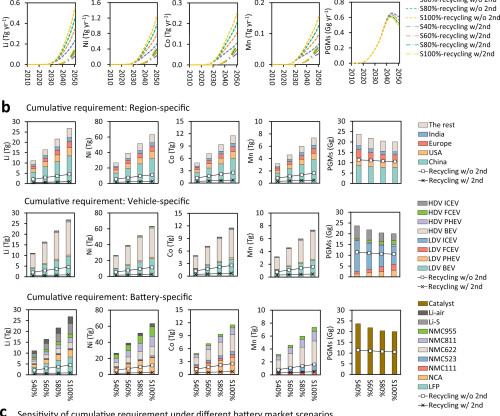Cornell study examines trade-off between critical metals requirement and transportation decarbonization
Green Car Congress
APRIL 17, 2023
Decarbonization targets for road transportation should be coupled with electric vehicle deployment, the timing of carbon peak and neutrality, and accurate emission budgets. “Recycling w/o 2nd” indicates retired batteries that are directly recycled without a second life as energy storage systems (ESSs). Zhang et al.



















Let's personalize your content